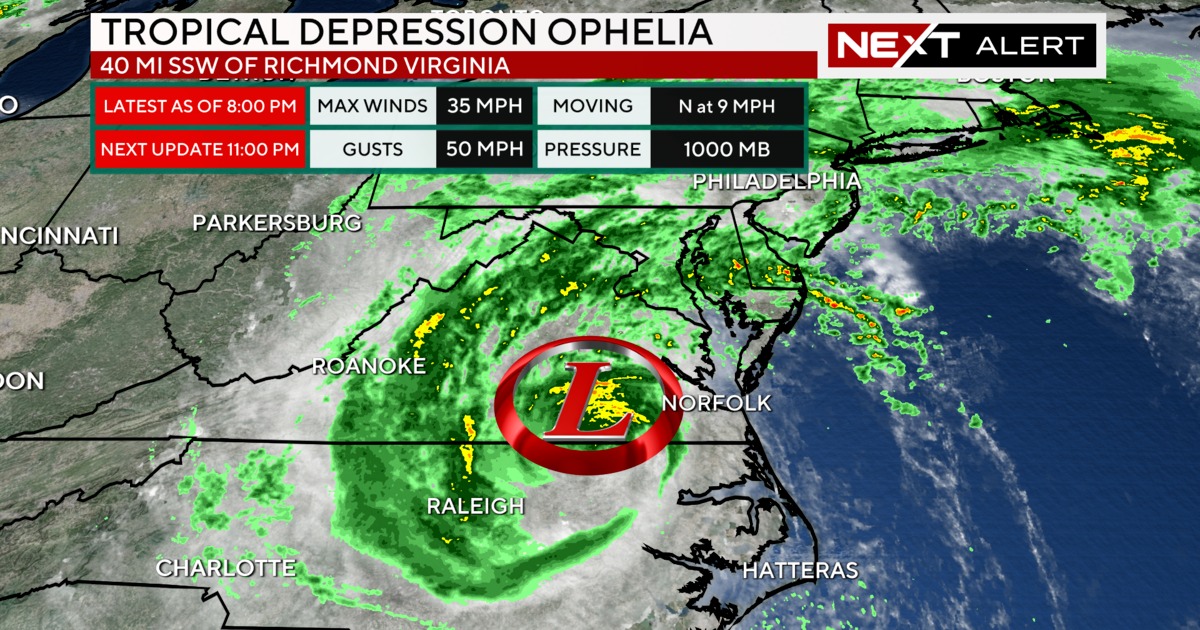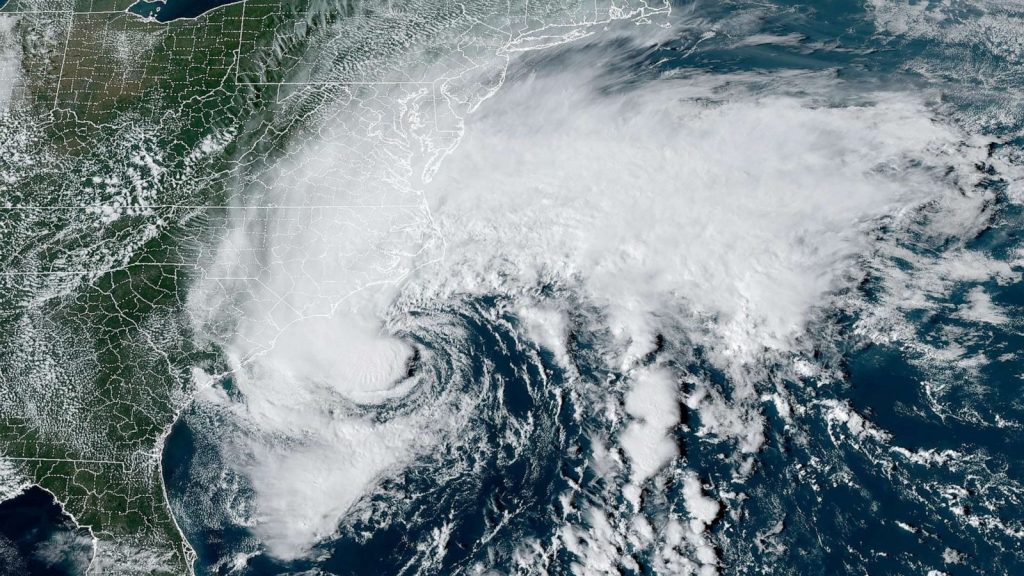News
Lingering Threats of Ophelia: Coastal Flooding and Heavy Rain Continue to Haunt US Northeast
In a relentless display of nature’s power, Ophelia, though downgraded from a tropical storm, still casts its menacing shadow over parts of the Northeast. The National Hurricane Center issued a sobering warning of coastal flooding, life-threatening waves, and heavy rain extending from Washington to New York City on Sunday.
As Ophelia gradually weakened, a new tropical storm named Philippe stirred in the Atlantic, reminding us that the hurricane season remains unpredictable.
Despite its downgrade on Saturday night, meteorologists cautioned that Ophelia’s lingering presence would cast ripples of impact along the East Coast throughout the weekend. This would manifest in perilous surf conditions and rip currents. Furthermore, Ophelia was expected to bestow an additional 1 to 3 inches of rainfall upon parts of the Mid-Atlantic and New England, with isolated river flooding being a distinct possibility.
As Sunday dawned, Ophelia was positioned south of Washington, projected to continue its northeastward journey before turning eastward and further diminishing over the ensuing two days, according to the hurricane center. Meanwhile, Philippe loomed 1,175 miles west of the Cabo Verde Islands off the west coast of Africa, sporting maximum sustained winds of 50 mph.
The National Weather Service reported multiple instances of coastal flooding in various New Jersey communities, including Sea Isle City and Brielle. Thousands of residents in the state remained without power on Sunday, with NJ.com reporting over 6,000 customers in the dark, down from a peak of 13,000.
Coastal Delaware bore witness to flooding and road closures, further emphasizing Ophelia’s disruptive impact.
Ophelia made landfall on Saturday near Emerald Isle, North Carolina, with nearly hurricane-strength winds reaching 70 mph. However, as the system moved north, its winds gradually weakened, as noted by the hurricane center. Social media was flooded with videos portraying significant flooding in riverfront communities such as New Bern, Belhaven, and Washington. Several thousand homes and businesses in North Carolina remained without electricity on Sunday morning, according to poweroutage.us, a utility tracking platform.
Even before reaching the coast, Ophelia proved hazardous enough to necessitate the Coast Guard’s rescue of five individuals, including three children. They were stranded on a 38-foot catamaran in turbulent waters and strong winds while anchored off Cape Lookout, North Carolina, on Friday night.
On Saturday, Greenville police posted a heartwarming video on Facebook showcasing an officer’s heroic rescue of a small pit bull from floodwaters. The dog had been tied to a fence and was perilously close to drowning before the officer’s timely response. Authorities initiated an investigation into the incident, underscoring the need for responsible pet ownership during such natural disasters.
Elsewhere, a dedicated rescue team, coordinated with the Beaufort County Sheriff’s Office, facilitated the evacuation of 15 people from a campground nestled between the Pamlico River and Chocowinity Bay, as detailed by Brian Haines, a spokesperson for the North Carolina Division of Emergency Management.
In a remarkable turn of events, the organizers at the southern tip of North Carolina’s Outer Banks were able to finally open the long-awaited Beaufort Pirate Invasion on Sunday. This weekend event commemorates the 1747 Spanish attack on the town but faced its own battle with the elements as strong winds tore down the banquet’s grand tent on Saturday, damaging several others in the process.
In another twist of fate, high winds compelled New York City officials to suspend ferry services to Rockaway, while other ferry routes operated as scheduled.
In response to the looming threat, the governors of North Carolina, Virginia, and Maryland each declared a state of emergency on Friday.
Scientists emphasize that climate change could lead to more frequent hurricane occurrences extending into mid-latitude regions. Storms like Hurricane Lee, witnessed this month, may become commonplace. Research reveals that hurricanes would track closer to coastal areas, affecting regions including Boston, New York City, and Virginia, and could form more frequently along the Southeast coast.
While the impact of Ophelia varied across different areas it touched on Saturday, the story of Aaron Montgomery in Williamsburg, Virginia, serves as a reminder of the hurricane’s far-reaching consequences. Despite the challenges posed by a leak in his family’s new home, Aaron and his wife made the hour-long drive to Virginia Beach for her birthday, where they encountered strong surf and winds but thankfully, a cessation of rainfall.
As Ophelia’s chapter unfolds, we are reminded of nature’s unforgiving power, and the importance of preparedness and resilience in the face of increasingly unpredictable weather patterns.



